Your cart is currently empty!
Tag: Risks
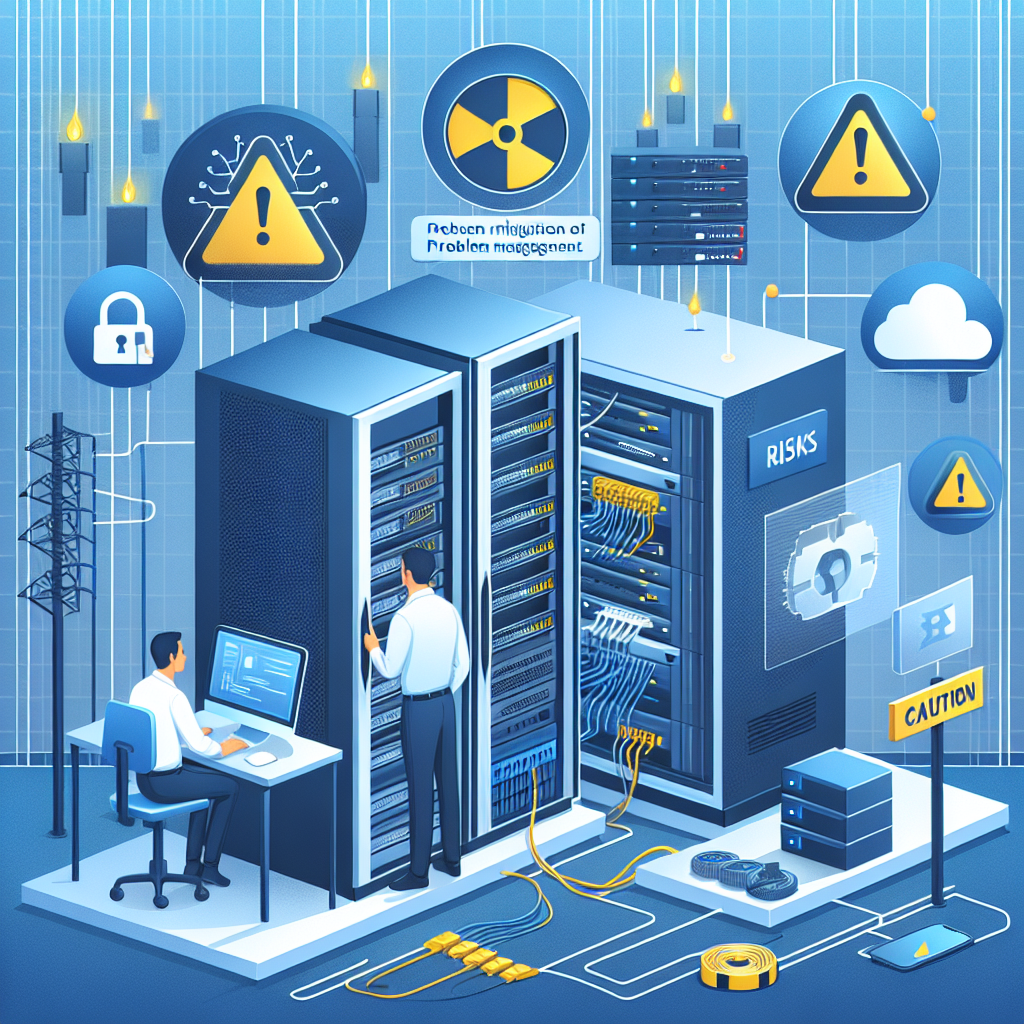
Mitigating Risks in the Data Center: The Importance of Problem Management
In today’s digital age, data centers are the backbone of any organization. They store and process vast amounts of critical information, making them a prime target for cyber attacks, hardware failures, and other potential risks. To ensure the smooth operation of a data center, it is crucial to have a robust problem management strategy in place.Problem management is the process of identifying, analyzing, and resolving issues within the data center environment. It involves proactive measures to mitigate risks and prevent potential problems from escalating into major incidents. By addressing issues before they impact operations, problem management helps to minimize downtime, improve performance, and enhance overall data center reliability.
One of the key benefits of problem management is its ability to identify recurring issues and root causes. By tracking and analyzing incidents over time, data center operators can pinpoint patterns and trends that may indicate underlying problems within the infrastructure. This allows them to take corrective action to prevent similar issues from occurring in the future.
Another important aspect of problem management is risk assessment. By evaluating potential threats and vulnerabilities, data center operators can prioritize their efforts and allocate resources effectively. This proactive approach helps to minimize the likelihood of security breaches, data loss, and other critical events that could jeopardize the integrity of the data center.
In addition to identifying and mitigating risks, problem management also plays a crucial role in improving operational efficiency. By streamlining processes, standardizing procedures, and implementing best practices, data center operators can enhance performance, reduce costs, and optimize resource utilization. This not only benefits the organization’s bottom line but also ensures a more reliable and resilient data center environment.
Ultimately, problem management is essential for maintaining the health and stability of a data center. By proactively addressing issues, mitigating risks, and improving operational efficiency, organizations can ensure the uninterrupted availability of critical services and data. In today’s fast-paced and data-driven world, a solid problem management strategy is a must-have for any organization that relies on its data center for business success.
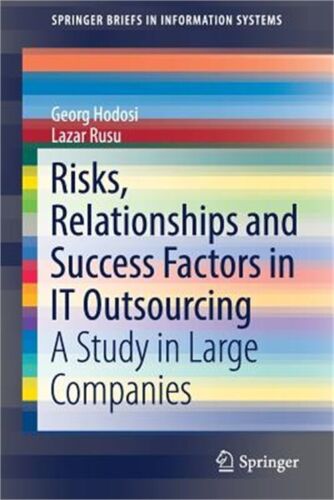
Risks, Relationships and Success Factors in It Outsourcing: A Study in Large Com

Risks, Relationships and Success Factors in It Outsourcing: A Study in Large Com
Price :77.86– 64.88
Ends on : N/A
View on eBay
paniesOutsourcing IT services has become a common practice among large companies looking to improve their operational efficiency and reduce costs. However, there are risks involved in outsourcing IT services, particularly when it comes to managing relationships with external service providers and ensuring successful outcomes.
A recent study conducted among large companies in the IT outsourcing industry revealed several key findings related to risks, relationships, and success factors in IT outsourcing. The study found that one of the biggest risks companies face when outsourcing IT services is the loss of control over critical business functions and data. This can lead to security breaches, data leaks, and other potential threats to the business.
In terms of relationships, the study found that maintaining a strong and collaborative relationship with the external service provider is crucial for the success of an IT outsourcing project. Communication, trust, and transparency were identified as key factors in building and maintaining a successful relationship with the service provider.
Success factors in IT outsourcing were also examined in the study, with factors such as clear project goals, effective project management, and regular performance monitoring identified as critical components of a successful IT outsourcing project. Companies that were able to effectively manage these factors were more likely to achieve their desired outcomes and realize the benefits of outsourcing IT services.
Overall, the study highlighted the importance of carefully managing risks, building strong relationships, and focusing on key success factors in IT outsourcing. By taking these factors into consideration, companies can maximize the benefits of outsourcing IT services and ensure the success of their projects.
#Risks #Relationships #Success #Factors #Outsourcing #Study #Large, IT Outsourcing
How Data Center Inspections Can Identify and Mitigate Potential Risks
Data centers are the backbone of modern businesses, housing critical IT infrastructure and data that are essential for operations. With the increasing reliance on data centers, ensuring their reliability and security is paramount. One way to achieve this is through regular inspections to identify and mitigate potential risks.Data center inspections involve a thorough assessment of the facility’s physical infrastructure, equipment, and systems to ensure they are functioning optimally and are in compliance with industry standards and regulations. By conducting regular inspections, data center operators can proactively address any issues before they escalate into major problems that could potentially disrupt operations and compromise data security.
One of the key benefits of data center inspections is the identification of potential risks that could lead to downtime or data loss. For example, inspections can uncover issues such as overheating equipment, inadequate cooling systems, power outages, and faulty cabling, all of which can impact the performance and reliability of the data center. By addressing these risks early on, data center operators can prevent costly downtime and data loss, ensuring business continuity and data security.
In addition to identifying risks, data center inspections also help in mitigating them through remediation and preventive measures. For example, if an inspection reveals that the data center’s cooling systems are not functioning properly, operators can take immediate action to repair or replace the equipment to prevent overheating and potential downtime. Similarly, if the inspection uncovers security vulnerabilities, operators can implement additional security measures to safeguard the data center from cyber threats.
Furthermore, data center inspections can also help in optimizing the efficiency and performance of the facility. By identifying areas where improvements can be made, such as upgrading equipment or reorganizing cabling, operators can enhance the overall performance of the data center, leading to increased reliability and cost savings.
Overall, data center inspections play a critical role in ensuring the reliability, security, and efficiency of data centers. By identifying and mitigating potential risks, operators can prevent costly downtime and data loss, while also optimizing the performance of the facility. Therefore, regular inspections should be a priority for all data center operators to safeguard their critical IT infrastructure and data.

Mitigating the Risks of Data Center Downtime: Tips for IT Leaders
Data center downtime can be a costly and disruptive issue for businesses, causing loss of revenue, damage to reputation, and hindered productivity. As an IT leader, it is crucial to have a plan in place to mitigate the risks of data center downtime and ensure the smooth operation of your organization’s IT infrastructure. Here are some tips for IT leaders to prevent and manage data center downtime:1. Conduct Regular Maintenance and Monitoring: Regular maintenance of your data center equipment is essential to prevent unexpected failures. Make sure to schedule routine inspections, testing, and updates to keep your systems running smoothly. Additionally, implement monitoring tools to track the performance of your data center and detect any potential issues before they escalate.
2. Implement Redundancy and Backup Systems: To minimize the impact of hardware failures or power outages, it is important to have redundancy and backup systems in place. This includes redundant power supplies, backup generators, and failover mechanisms to ensure continuous operation in the event of a failure.
3. Have a Disaster Recovery Plan: In the event of a major outage or disaster, having a comprehensive disaster recovery plan in place is crucial. This plan should outline the steps to be taken to restore operations, including data backups, alternative communication channels, and procedures for contacting key stakeholders.
4. Train Your Staff: Ensure that your IT team is well-trained in data center operations and disaster recovery procedures. Regular training sessions and drills can help your team respond effectively in the event of a downtime incident.
5. Monitor Environmental Conditions: Environmental factors such as temperature, humidity, and air quality can impact the performance of your data center equipment. Implement monitoring systems to track these conditions and address any issues that may arise.
6. Regularly Test Your Systems: Regularly testing your data center systems and disaster recovery procedures is essential to ensure their effectiveness. Conducting simulated downtime scenarios can help you identify any weaknesses in your systems and make necessary improvements.
7. Stay Up-to-Date on Industry Trends: Stay informed about the latest developments in data center technology and best practices. By staying ahead of the curve, you can implement new solutions and strategies to prevent downtime and keep your data center running smoothly.
By following these tips, IT leaders can mitigate the risks of data center downtime and ensure the reliable operation of their organization’s IT infrastructure. Proactive planning, regular maintenance, and effective response strategies are key to minimizing the impact of downtime incidents and keeping your business running smoothly.
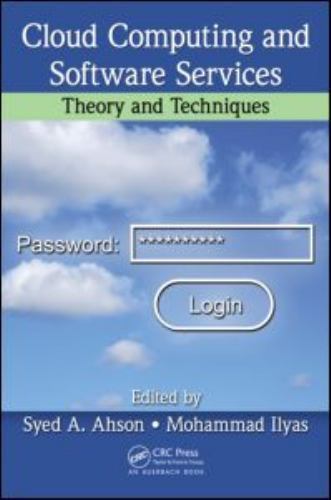
Cloud Computing Assessing the Risks – It Governance

Cloud Computing Assessing the Risks – It Governance
Price : 23.83
Ends on : N/A
View on eBay
Cloud computing has become an essential part of modern business operations, offering numerous benefits such as scalability, flexibility, and cost-effectiveness. However, along with these advantages come risks that organizations must carefully assess and manage to ensure the security and integrity of their data.One of the key risks associated with cloud computing is data security. Storing sensitive information in the cloud can make it vulnerable to cyberattacks, data breaches, and unauthorized access. Organizations must ensure that their cloud service provider has robust security measures in place, such as encryption, access controls, and regular security audits.
Another risk to consider is data privacy. When data is stored in the cloud, organizations must comply with various data protection regulations, such as the General Data Protection Regulation (GDPR) in the European Union. Failure to comply with these regulations can result in hefty fines and damage to the organization’s reputation.
Performance and availability are also important considerations when assessing the risks of cloud computing. Organizations must ensure that their cloud service provider can guarantee high uptime and performance levels to prevent disruptions to their operations.
To effectively manage the risks associated with cloud computing, organizations should implement a comprehensive IT governance framework. This framework should include policies and procedures for cloud usage, risk assessments, security controls, and compliance with regulations. Regular monitoring and auditing of cloud services are also essential to ensure that data remains secure and protected.
In conclusion, while cloud computing offers many benefits, organizations must carefully assess and manage the risks associated with it to ensure the security and integrity of their data. By implementing a robust IT governance framework, organizations can mitigate these risks and leverage the full potential of cloud computing for their business operations.
#Cloud #Computing #Assessing #Risks #Governance, Cloud Computing
Mitigating Risks Through Proactive Data Center Vendor Management
In today’s digital age, data centers have become the backbone of countless businesses, housing valuable information and critical systems. With the increasing reliance on data centers, it is essential for organizations to prioritize vendor management to mitigate risks and ensure smooth operations.Proactive data center vendor management is the process of actively monitoring and managing relationships with data center service providers to minimize risks and maximize performance. By taking a proactive approach, organizations can identify and address potential issues before they escalate, ultimately protecting their data and ensuring business continuity.
One of the key benefits of proactive data center vendor management is risk mitigation. By closely monitoring vendor performance and compliance with service level agreements, organizations can identify and address potential vulnerabilities before they result in downtime or data loss. This proactive approach helps to minimize the impact of potential disruptions and ensures that data center operations remain secure and reliable.
Another advantage of proactive vendor management is improved performance. By working closely with data center service providers, organizations can optimize their infrastructure and ensure that it meets their specific needs and requirements. This level of collaboration can lead to cost savings, improved efficiency, and enhanced performance, ultimately benefiting the organization as a whole.
Furthermore, proactive vendor management can also help organizations stay ahead of emerging technologies and trends in the data center industry. By fostering strong relationships with service providers, organizations can gain insights into new technologies and best practices, allowing them to stay competitive and adapt to changing market conditions.
In order to effectively mitigate risks through proactive data center vendor management, organizations should establish clear communication channels with service providers, regularly review performance metrics, and conduct regular audits to ensure compliance with industry standards and regulations. By staying proactive and vigilant, organizations can protect their data, optimize their infrastructure, and stay ahead of the curve in the ever-evolving data center landscape.
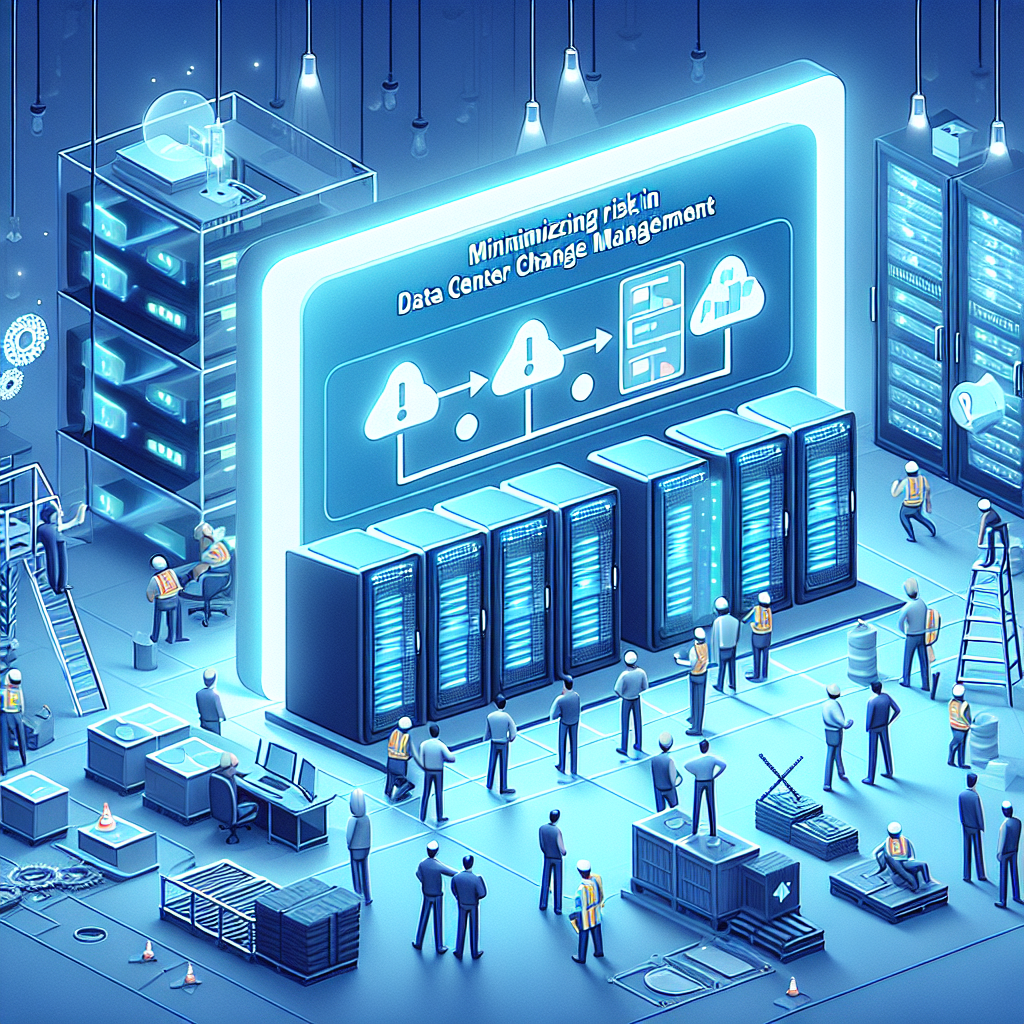
Strategies for Minimizing Risks in Data Center Change Management
Data centers are the backbone of today’s digital infrastructure, housing and managing vast amounts of critical data for organizations of all sizes. With the ever-increasing reliance on data centers, the need for efficient and effective change management strategies is more important than ever. Managing changes in a data center environment can be a complex and risky process, as any misstep can lead to downtime, data loss, and potential security breaches. In order to minimize risks and ensure smooth transitions during change management processes, organizations must implement strategic measures to mitigate potential issues.One of the key strategies for minimizing risks in data center change management is thorough planning and preparation. Before making any changes to the data center environment, it is essential to conduct a comprehensive assessment of the current infrastructure, identifying potential risks and vulnerabilities that could impact the change process. This includes assessing the impact of the proposed changes on existing systems, applications, and data, as well as identifying any dependencies that may be affected by the change. By thoroughly planning and preparing for changes, organizations can reduce the likelihood of unexpected issues arising during the change management process.
Another important strategy for minimizing risks in data center change management is to establish clear communication channels and stakeholder engagement. It is essential to involve key stakeholders in the change management process, including IT teams, business leaders, and end users, to ensure that everyone is informed and on board with the proposed changes. By keeping stakeholders informed and involved throughout the change management process, organizations can identify potential issues early on and address them before they escalate into larger problems.
In addition to thorough planning and stakeholder engagement, organizations should also implement robust testing and validation processes to minimize risks during data center change management. Before implementing any changes to the data center environment, it is essential to conduct thorough testing to ensure that the changes will not impact the stability or performance of existing systems. This includes testing the changes in a controlled environment before rolling them out to production, as well as implementing rollback procedures in case any issues arise during the change process.
Furthermore, organizations should prioritize security and compliance considerations when implementing changes in the data center environment. Data centers house sensitive and critical data, making them prime targets for cyber attacks and security breaches. By implementing security best practices, such as encryption, access controls, and monitoring tools, organizations can minimize the risk of data breaches and ensure the integrity of their data during change management processes. Additionally, organizations must ensure that any changes made to the data center environment comply with industry regulations and standards, such as GDPR or HIPAA, to avoid potential legal and financial consequences.
In conclusion, minimizing risks in data center change management requires a strategic approach that prioritizes thorough planning, stakeholder engagement, testing, and security considerations. By implementing these strategies, organizations can reduce the likelihood of downtime, data loss, and security breaches during change management processes, ensuring the stability and performance of their data center environment. With the increasing complexity and importance of data centers, effective change management strategies are essential for organizations to adapt to evolving business needs while minimizing risks and ensuring the integrity of their data.

Mitigating Risks and Ensuring Resilience in Data Center Power Distribution Systems
Data centers play a crucial role in today’s digital age, serving as the backbone of the internet and housing vast amounts of sensitive information. With the increasing reliance on data centers for storing and processing data, ensuring their continuous operation is paramount. One of the key components of a data center’s infrastructure is its power distribution system, which is responsible for delivering electricity to the servers, networking equipment, and cooling systems.Mitigating risks and ensuring resilience in data center power distribution systems is essential to prevent costly downtime and protect critical data. There are several strategies that data center operators can implement to enhance the reliability and efficiency of their power distribution systems.
First and foremost, conducting regular maintenance and inspections of the power distribution system is crucial to identify and address any potential issues before they escalate into major problems. This includes checking for loose connections, worn-out components, and signs of overheating. By proactively monitoring the health of the power distribution system, data center operators can prevent unexpected failures and minimize the risk of downtime.
In addition to regular maintenance, implementing redundancy in the power distribution system is essential for ensuring resilience. This can be achieved by installing backup power sources, such as uninterruptible power supplies (UPS) and generators, to provide electricity in the event of a utility power outage. Redundancy ensures that the data center remains operational even in the face of unforeseen disruptions, such as severe weather events or equipment failures.
Furthermore, data center operators should consider implementing a robust power management system to monitor and control the flow of electricity within the facility. By leveraging advanced monitoring and automation technologies, operators can optimize the efficiency of the power distribution system, identify potential issues in real-time, and take proactive measures to prevent downtime.
Another critical aspect of mitigating risks in data center power distribution systems is ensuring compliance with industry standards and regulations. Data centers are subject to strict guidelines regarding electrical safety, energy efficiency, and environmental sustainability. By adhering to these standards, operators can minimize the risk of regulatory fines, prevent accidents, and demonstrate their commitment to responsible data center operations.
In conclusion, mitigating risks and ensuring resilience in data center power distribution systems is essential for maintaining the reliability and availability of critical IT infrastructure. By implementing proactive maintenance practices, redundancy measures, advanced monitoring technologies, and compliance with industry standards, data center operators can minimize the risk of downtime, protect valuable data, and uphold the trust of their customers. Investing in the security and resilience of the power distribution system is a wise decision that can pay off in the long run by safeguarding the continuity of operations and enhancing the overall performance of the data center.

Mitigating Risks and Improving Data Center MTTR Through Proactive Maintenance
Mitigating Risks and Improving Data Center MTTR Through Proactive MaintenanceIn today’s digital age, data centers play a crucial role in the functioning of businesses and organizations. These facilities house servers, storage systems, networking equipment, and other critical infrastructure that enable the processing and storage of vast amounts of data. As such, any downtime or disruption in a data center can have a significant impact on operations, leading to potential financial losses and damage to reputation.
To minimize the risks associated with data center downtime and improve Mean Time To Repair (MTTR), proactive maintenance is essential. Proactive maintenance involves regularly monitoring, maintaining, and optimizing data center infrastructure to prevent issues before they occur. By taking a proactive approach to maintenance, organizations can identify potential problems early on, address them promptly, and reduce the likelihood of unexpected downtime.
There are several key strategies that organizations can implement to mitigate risks and improve MTTR through proactive maintenance:
1. Regularly scheduled maintenance: Establishing a regular maintenance schedule for data center equipment is crucial for ensuring optimal performance and reliability. This includes tasks such as cleaning, inspecting, and testing equipment, as well as performing firmware updates and software patches. By staying on top of maintenance tasks, organizations can identify and address potential issues before they escalate into major problems.
2. Monitoring and alerting systems: Implementing monitoring and alerting systems that track the performance and health of data center equipment can help organizations proactively identify issues and respond quickly. These systems can provide real-time alerts when equipment is operating outside of normal parameters, allowing IT teams to take immediate action to prevent downtime.
3. Predictive analytics: Leveraging predictive analytics tools can enable organizations to forecast potential equipment failures and prioritize maintenance activities accordingly. By analyzing historical performance data and trends, organizations can identify patterns that indicate when equipment is likely to fail and take proactive measures to address these issues before they impact operations.
4. Disaster recovery planning: Developing a comprehensive disaster recovery plan is essential for mitigating risks and minimizing downtime in the event of a data center failure. Organizations should regularly test and update their disaster recovery plans to ensure that they are effective and can be implemented quickly in the event of an emergency.
By implementing proactive maintenance strategies, organizations can reduce the risks associated with data center downtime and improve MTTR. By staying ahead of potential issues and taking a proactive approach to maintenance, organizations can ensure that their data center infrastructure remains reliable, efficient, and resilient in the face of unexpected challenges. Ultimately, investing in proactive maintenance can help organizations minimize downtime, protect their valuable data, and maintain their competitive edge in today’s digital landscape.
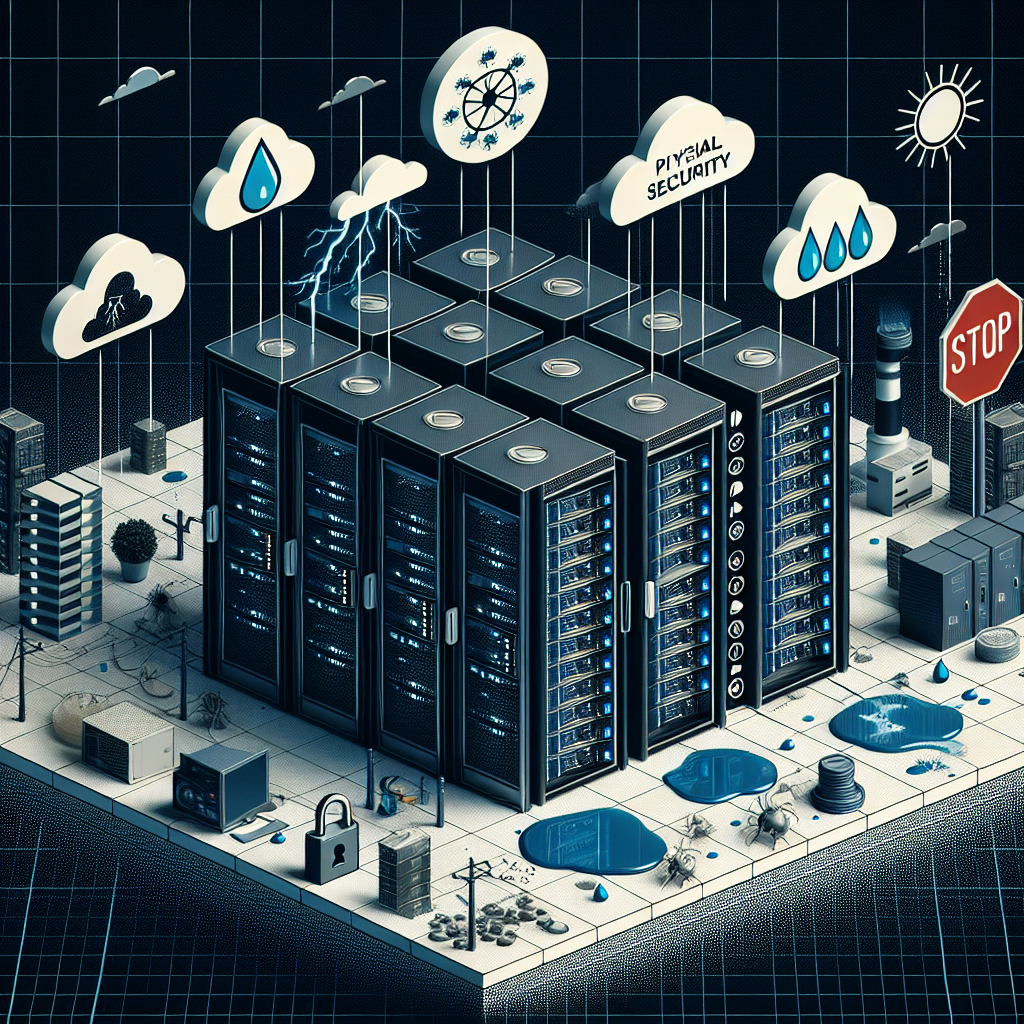
The Top Data Center Risks to Consider in Your Risk Assessment
Data centers are the backbone of modern businesses, housing critical information and systems that keep companies running smoothly. However, with the increasing reliance on digital technology, data centers are becoming more vulnerable to a variety of risks that can disrupt operations and compromise sensitive data. When conducting a risk assessment for your data center, it is vital to consider the following top risks:1. Physical security breaches: Data centers are prime targets for criminals looking to steal valuable data or disrupt operations. Without proper security measures in place, unauthorized individuals can gain access to the facility and cause significant damage. It is essential to implement robust security protocols such as access control systems, surveillance cameras, and security guards to prevent physical breaches.
2. Natural disasters: Data centers are susceptible to a range of natural disasters, including earthquakes, floods, hurricanes, and wildfires. These events can cause power outages, equipment damage, and data loss, resulting in significant downtime and financial losses. To mitigate the risks associated with natural disasters, data centers should be located in areas with low risk of natural disasters and equipped with backup power sources and disaster recovery plans.
3. Power outages: Power outages can occur due to various factors such as equipment failure, grid malfunctions, or severe weather conditions. A prolonged power outage can disrupt data center operations and lead to data loss if backup power sources are not in place. It is crucial to have uninterruptible power supply (UPS) systems and backup generators to ensure continuous power supply to critical systems.
4. Cybersecurity threats: With the rise of cyber attacks, data centers are increasingly targeted by hackers seeking to steal sensitive information or disrupt operations. Cybersecurity threats such as malware, ransomware, and phishing attacks can compromise data integrity and confidentiality, leading to financial and reputational damage. Data centers should implement robust cybersecurity measures, including firewalls, encryption, and regular security audits, to protect against cyber threats.
5. Equipment failures: Data centers rely on a complex network of servers, storage systems, and networking equipment to operate efficiently. Equipment failures can occur due to various reasons, such as aging hardware, improper maintenance, or overheating. Regular maintenance, monitoring, and redundancy of critical equipment are essential to prevent downtime and data loss caused by equipment failures.
In conclusion, data center risks are varied and complex, requiring a comprehensive risk assessment to identify vulnerabilities and implement effective mitigation strategies. By considering the top data center risks mentioned above and taking proactive measures to address them, businesses can ensure the security, reliability, and continuity of their data center operations.
